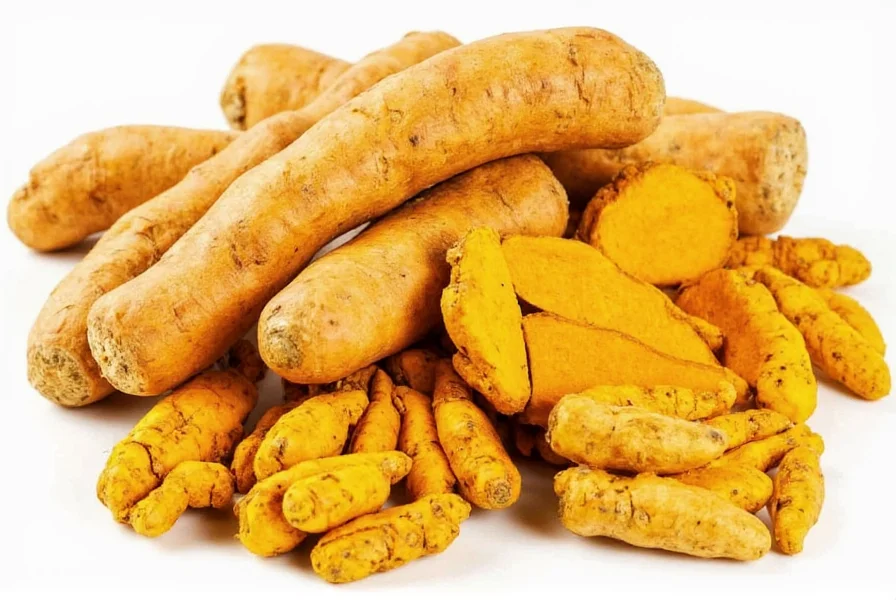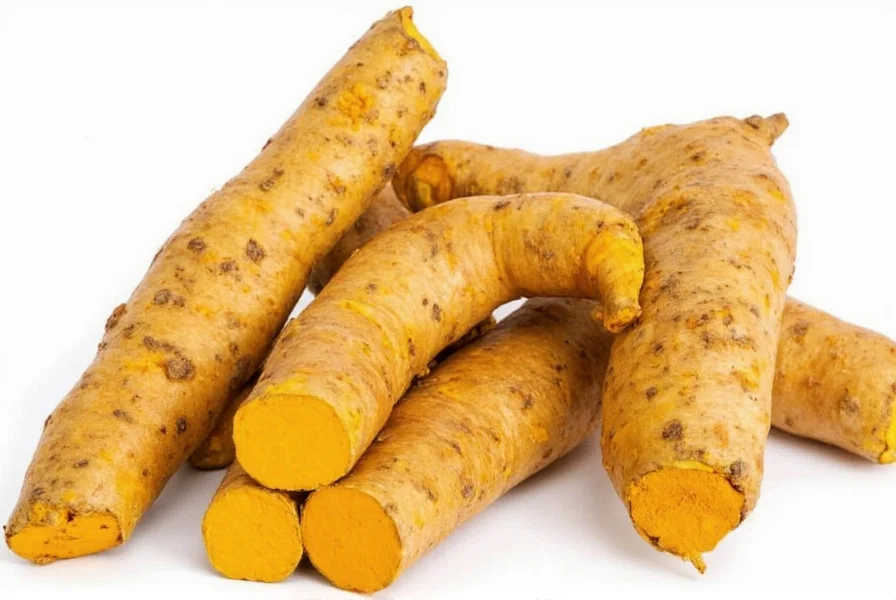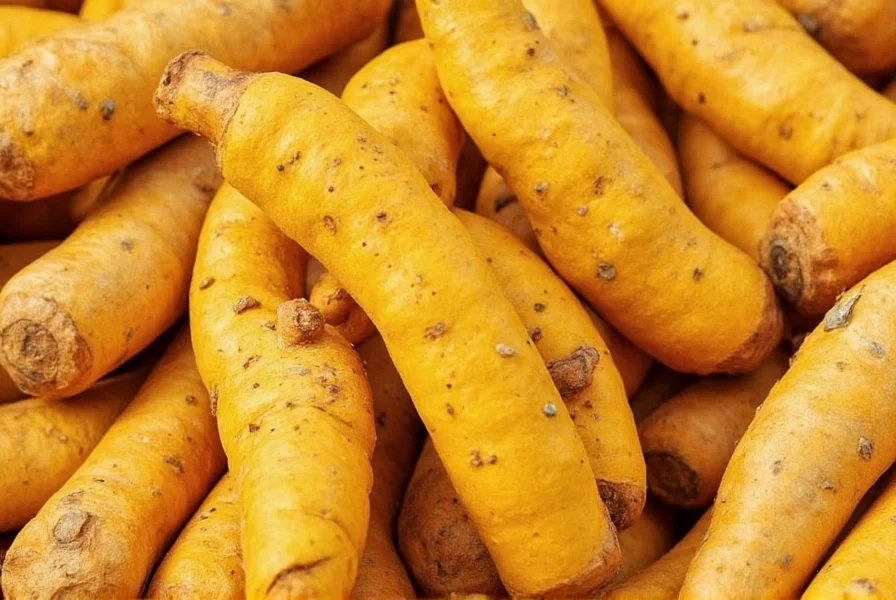Fresh turmeric roots serve as the unprocessed foundation of one of the world's most researched spices. Unlike the powdered form found in grocery stores, whole turmeric rhizomes offer superior flavor complexity and potentially higher curcumin content when properly stored and prepared. Understanding the unique properties of fresh turmeric roots helps maximize their culinary and potential wellness applications.
Physical Characteristics of Turmeric Roots
Turmeric rhizomes typically measure 2-4 inches in length with a rough, brown outer skin covering bright orange interior flesh. When cut open, they release a characteristic earthy aroma with citrus and ginger-like notes. The texture resembles ginger but tends to be more fibrous and less juicy. Fresh turmeric roots contain approximately 3-5% curcumin by weight, significantly higher than many processed forms when considering degradation during processing.
Nutritional Profile and Bioactive Compounds
The therapeutic potential of turmeric roots primarily stems from curcuminoids, with curcumin representing about 77% of these compounds. Additional valuable components include:
| Compound | Concentration in Fresh Roots | Primary Benefits |
|---|---|---|
| Curcumin | 2-5% | Antioxidant, anti-inflammatory properties |
| Demethoxycurcumin | 15-20% of curcuminoids | Complementary anti-inflammatory effects |
| Bisdemethoxycurcumin | 3-5% of curcuminoids | Enhanced bioavailability support |
| Turmerones | 0.3-1.5% | Potential neuroprotective properties |
Health Properties Supported by Research
While not a substitute for medical treatment, numerous studies suggest potential health benefits associated with turmeric roots. The National Center for Complementary and Integrative Health notes that curcumin demonstrates anti-inflammatory effects in laboratory studies. Research published in Advances in Experimental Medicine and Biology indicates that curcumin may support healthy inflammatory responses when consumed with black pepper (piperine), which enhances absorption by up to 2,000%.
When evaluating fresh turmeric root benefits, consider these evidence-based applications:
- Dietary antioxidant support: Turmeric roots contain potent antioxidants that may help combat oxidative stress
- Culinary anti-inflammatory: Regular inclusion in cooking may contribute to dietary approaches supporting healthy inflammation levels
- Digestive support: Traditional use in Ayurvedic medicine for digestive wellness
- Skin health: Topical applications in traditional medicine systems
Practical Culinary Applications
How to use turmeric roots in cooking differs significantly from powdered turmeric. Fresh roots provide a more complex flavor profile with brighter, more pronounced notes. Professional chefs recommend:
- Peel turmeric roots using a spoon (like ginger) to minimize staining
- Grate or thinly slice for maximum surface area when cooking
- Add during the last 10-15 minutes of cooking to preserve volatile compounds
- Combine with healthy fats (coconut oil, avocado) and black pepper to enhance curcumin absorption
Popular applications include golden milk, fresh curry pastes, salad dressings, and roasted vegetable preparations. For those exploring how to store fresh turmeric root properly, refrigeration in a sealed container with a damp paper towel extends freshness for 2-3 weeks.

Growing Turmeric Roots at Home
Cultivating turmeric roots requires warm temperatures (68-86°F), high humidity, and partial shade. Gardeners report success with these steps:
- Select plump, firm rhizomes with multiple 'eyes' or growth points
- Plant 2 inches deep in well-draining soil with high organic content
- Maintain consistent moisture without waterlogging
- Harvest after 8-10 months when leaves begin yellowing
Home growers often ask about turmeric root vs powder yield ratios. Approximately 3 pounds of fresh rhizomes produce 1 pound of dried turmeric, which then yields about 10-12 ounces of powder after grinding.
Safety Considerations and Interactions
While generally recognized as safe, turmeric roots may interact with certain medications. The Memorial Sloan Kettering Cancer Center notes potential interactions with blood thinners and diabetes medications. Consuming more than 3 grams of curcumin daily may cause gastrointestinal discomfort in sensitive individuals. Pregnant women should consult healthcare providers before consuming therapeutic amounts.
Fresh Turmeric Roots vs Powdered Turmeric
Understanding turmeric root vs powder differences helps optimize usage:
- Flavor profile: Fresh roots offer brighter, more complex notes compared to earthier powder
- Curcumin content: Fresh roots may contain higher active compound levels before processing degradation
- Shelf life: Powder lasts 1-2 years; fresh roots last weeks when properly stored
- Usage: Powder works better in dry spice blends; fresh roots excel in wet preparations

Maximizing Benefits from Turmeric Roots
To optimize the potential benefits of fresh turmeric root, combine with complementary ingredients:
- Add black pepper (0.2% piperine minimum) to increase curcumin absorption
- Cook with healthy fats (coconut oil, olive oil) as curcumin is fat-soluble
- Pair with quercetin-rich foods (onions, apples) for potential synergistic effects
- Grate rather than chop to maximize surface area and compound release
Conclusion
Turmeric roots represent nature's original delivery system for curcumin and related compounds. Their vibrant color, distinctive flavor, and potential wellness properties make them valuable additions to both kitchen and wellness routines. By understanding proper selection, storage, preparation, and usage techniques, consumers can maximize the benefits of this ancient botanical while enjoying its culinary versatility. As with any dietary component, moderation and consideration of individual health circumstances remain essential.
Frequently Asked Questions
What's the difference between turmeric roots and ginger?
While both are rhizomes with similar appearance, turmeric roots have bright orange flesh versus ginger's pale yellow, possess a more earthy-bitter flavor compared to ginger's spicy heat, and contain curcumin (absent in ginger) as their primary bioactive compound. Turmeric also stains more intensely than ginger.
How much fresh turmeric root equals ground turmeric?
Generally, 1 inch of fresh turmeric root (about 1 tablespoon grated) equals approximately 1 teaspoon of ground turmeric. However, flavor intensity varies based on freshness and growing conditions, so taste adjustment may be necessary when substituting.
Can you eat turmeric roots raw?
Yes, you can consume fresh turmeric roots raw in small quantities, typically grated into salads, juices, or smoothies. Raw consumption preserves heat-sensitive compounds but may cause digestive discomfort for some people due to its potent nature. Start with small amounts (1/4-1/2 inch) to assess tolerance.
Why does turmeric stain so intensely?
Turmeric contains curcumin, a potent natural dye that binds strongly to proteins in skin, clothing, and surfaces. This staining property has been utilized for centuries in textile dyeing. To minimize stains, wear gloves when handling fresh turmeric and clean surfaces immediately with soapy water or a baking soda paste.
How do you know if turmeric roots have gone bad?
Signs of spoiled turmeric roots include excessive softness or mushiness, dark spots or mold growth, a sour or fermented smell (fresh turmeric should have an earthy, slightly citrus aroma), and dry, shriveled appearance. Properly stored fresh turmeric should remain firm with smooth skin for 2-3 weeks in the refrigerator.











 浙公网安备
33010002000092号
浙公网安备
33010002000092号 浙B2-20120091-4
浙B2-20120091-4